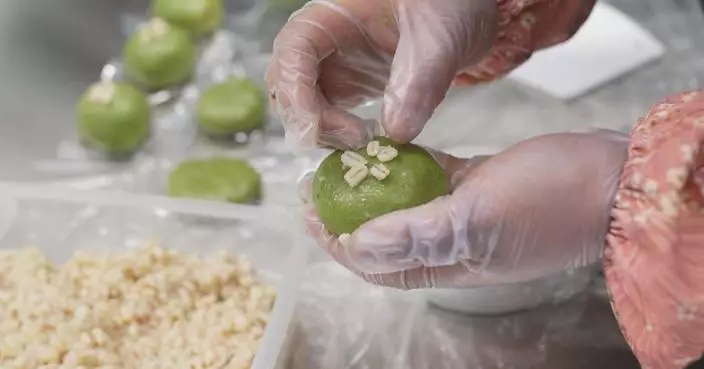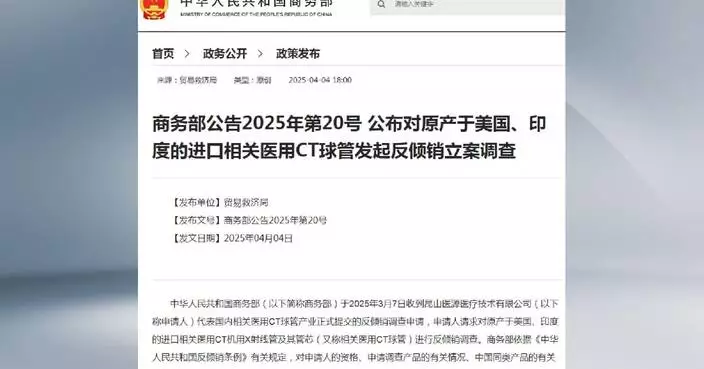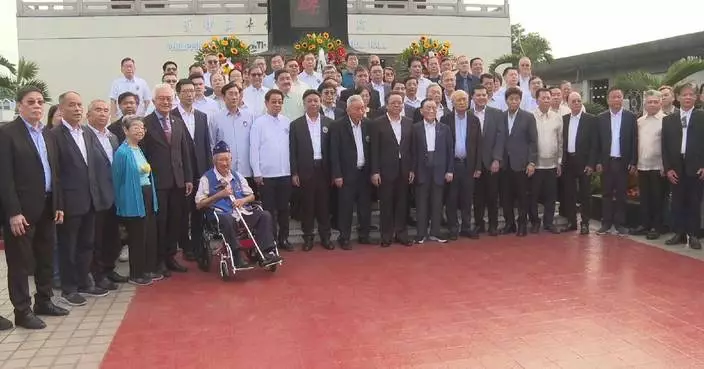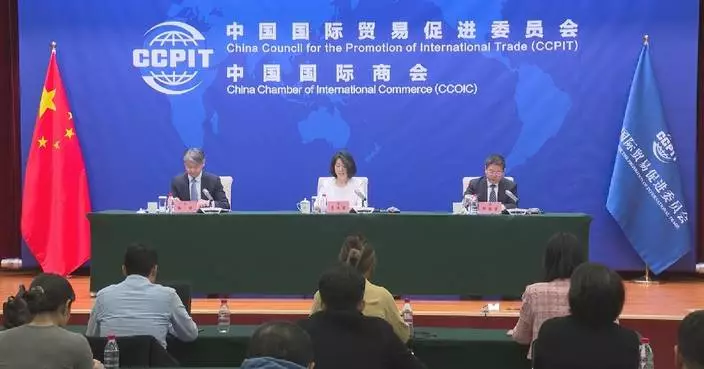The 2024 China International Fair for Trade in Service (CIFTIS) in Beijing, which opened on Thursday and will run through Monday, has yielded tangible results in promoting the growth in sectors such as tourism and investment.
Sichuan and Hainan are the guest provinces of honor at this year's fair.
One of the most prominent attractions in the exhibition area of southwest China's Sichuan is a 5-meter-high lantern from Zigong City. Renowned for its lantern-making, Zigong's creations are recognized as a national intangible cultural heritage, and the lanterns have been exhibited in more than 80 countries in a market-oriented fashion.
At the fair, Zigong secured projects with a contract value nearing 7 million yuan (about 1 million U.S. dollars).
China's southern island province of Hainan is promoting its Free Trade Port's one-stop service platform at the fair, which offers standardized solutions for government services to both domestic and foreign companies operating in the area.
Beijing, which has hosted investment-attraction activities at the CIFTIS for three consecutive years, is taking the opportunity to showcase its investment opportunities, favorable business environment and cultural appealing.
After the Beijing Central Axis has been added to the UNESCO World Heritage List, searches for one-day tours and homestays along the Central Axis have surged in popularity on e-commerce platforms, according to data from the fair's e-commerce conference.
In the business districts along the Central Axis, tourist spending has risen by approximately 40 percent from the previous year.
To boost its cultural tourism market, Beijing has become the first city in the country to establish payment service demonstration zones for foreign visitors, where over 95 percent of key business districts and scenic spots are equipped with POS machines accepting international cards, enhancing convenience for foreign tourists.
Beijing, Tianjin and north China's Hebei Province announced a new batch of investment projects on Friday, covering key industries such as new energy, intelligent connected vehicles, robotics and hydrogen energy, with a total investment exceeding 160 billion yuan. A total of 24 cooperation projects have been signed.
As the fair enters its third day, over 50 forums are scheduled, alongside the launch of more than 50 new technologies, services, and products.
The fair is showcasing a wide array of innovations, with expectations to unveil more than 200 integrated innovation results. A large number of the latest results have been released in the fields such as telecommunications, finance and digital economy in the past two days.

CIFTIS 2024 yields tangible results in promoting tourism, investment
As the Qingming Festival approaches this Friday, various traditional folk activities have been held across China, celebrating the rich cultural heritage of the occasion.
With a 2,500-year history, Qingming Festival, or the Festival of Pure Brightness, observed in early April, uniquely combines ancestral worship with the celebration of spring. Falling on the 15th day after the spring equinox, this ritual-rich observance reflects China's enduring values of ancestral veneration and inspires deep introspection about what gives life meaning.
In Sijia Village, Huayin City, northwest China’s Shaanxi Province, a unique swing festival is held to mark the occasion. Eighteen different types of traditional swings, such as the spinning wheel swing, the Bagua swing reminiscent of a rotating carousel, and the balance swing designed for two people, have attracted many visitors.
Historically, Sijia Village served as a military post guarding the strategic Tongguan pass, a former mountain pass and fortress located south of the confluence of the Wei and Yellow Rivers. The swing tradition in the village has its origins in military training exercises like climbing and river crossing. The local swing culture further developed as regional trade flourished, eventually evolving into the "swing festival" that continues today.
"It's very exciting and tests your skill, endurance, and most importantly, your arm strength. You need to maintain balance," said Qu Xiangyang, a visitor.
In Rudong County, Nantong City, east China's Jiangsu Province, another traditional Qingming activity takes place - kite flying.
Flying kites as a way of making wishes is an age-old Qingming custom in this region. As a result, the Qingming Festival in Nantong is also known as the "Kite Festival."
The local Banyao whistling kite making skills is listed as one of the first national intangible cultural heritage items.
According to a folk culture expert, people traditionally write the names of diseases or misfortunes on paper, attach it to a kite, and release it into the sky. This practice is believed to drive away illness and disaster, while also serving as a way to make wishes.
In south China's Guangdong Province, a large tug-of-war competition is underway in Maoming City. Teams from different towns and streets are competing, attracting many locals to cheer on their teams.
Tug-of-war, which originated during the late Spring and Autumn period (770 BC - 476 BC), became part of Qingming customs during the Tang Dynasty (618-907). Emperor Xuanzong of the Tang Dynasty once organized large-scale tug-of-war competitions for the festival.
"Tug-of-war became very popular in the Tang Dynasty, even emerging as the national sport. It originated in the Jingchu region and later spread across the country. In ancient Lingnan (Southern China), tug-of-war games were a common tradition. Through these events, people seek to pray for peace, prosperity, and abundant harvests," said Yao Guojun, vice dean of the College of Arts and Law, Guangdong University of Petrochemical Technology.
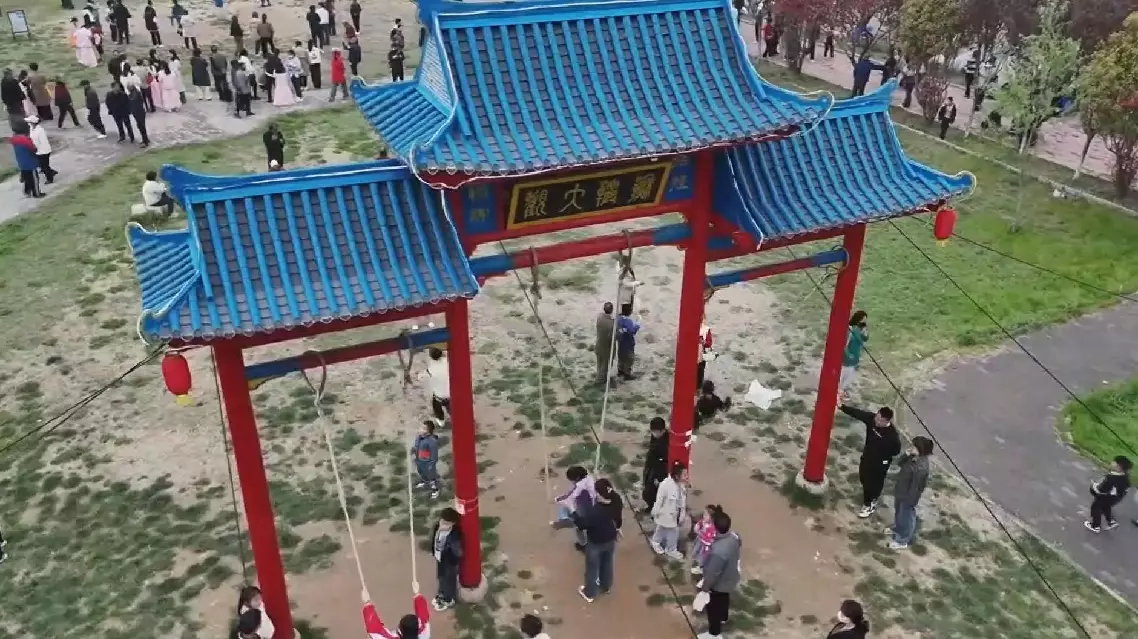
Traditional folk activities held for Qingming Festival







